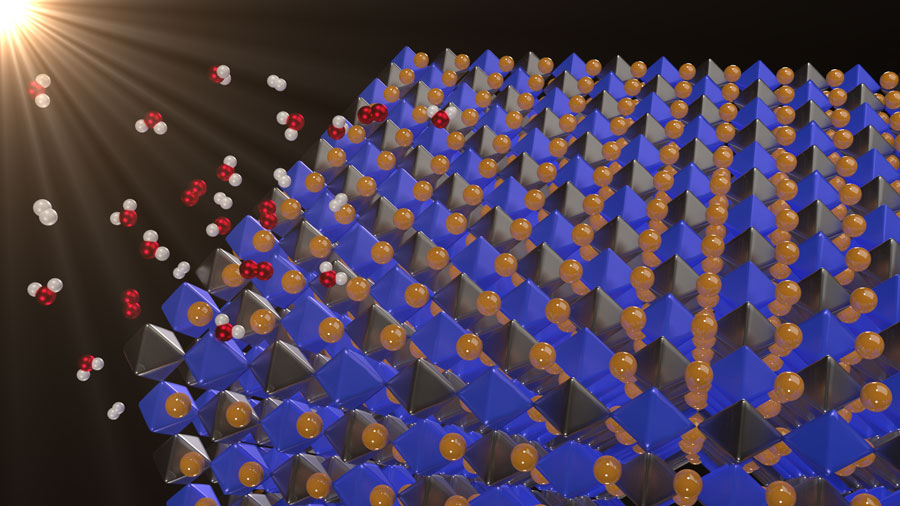Solar energy is clean and abundant. But when the sun isn’t shining, you must store the energy in batteries or through a process called photocatalysis — in which solar energy is used to make fuels. In photocatalytic water splitting, sunlight separates water into hydrogen and oxygen. The hydrogen and oxygen can then be recombined in a fuel cell to release energy.
Now, a new class of materials — halide double perovskites — may have just the right properties to split water, according to a newly published paper in Applied Physics Letters, from AIP Publishing.
“If we can come up with a material that can be useful as a water-splitting photocatalyst, then it would be an enormous breakthrough,” says Feliciano Giustino, a co-author on the paper.

Novel, lead-free double perovskites as potential photocatalysts for solar water splitting Image: Figure by George Volonakis
Researchers have experimented with many photocatalytic materials before, such as titanium dioxide (TiO2). While TiO2 can harness sunlight to split water, it’s inefficient because it doesn’t absorb visible light well. So far, no photocatalytic material for general water splitting has become commercially available.
Using supercomputers to calculate the quantum energy states of four halide double perovskites, George Volonakis and Giustino, both of the University of Oxford, found that Cs2BiAgCl6 and Cs2BiAgBr6 are promising photocatalytic materials because they absorb visible light much better than TiO2. They also generate electrons and holes (the positively charges absence of electrons) that have sufficient energy (or nearly ideal energies) to split water into hydrogen and oxygen.
Very few other materials have all these features at once, Giustino says. “We can’t say this will work for sure, but these compounds seem to have all the right properties.”
Source: American Institute of Physics




